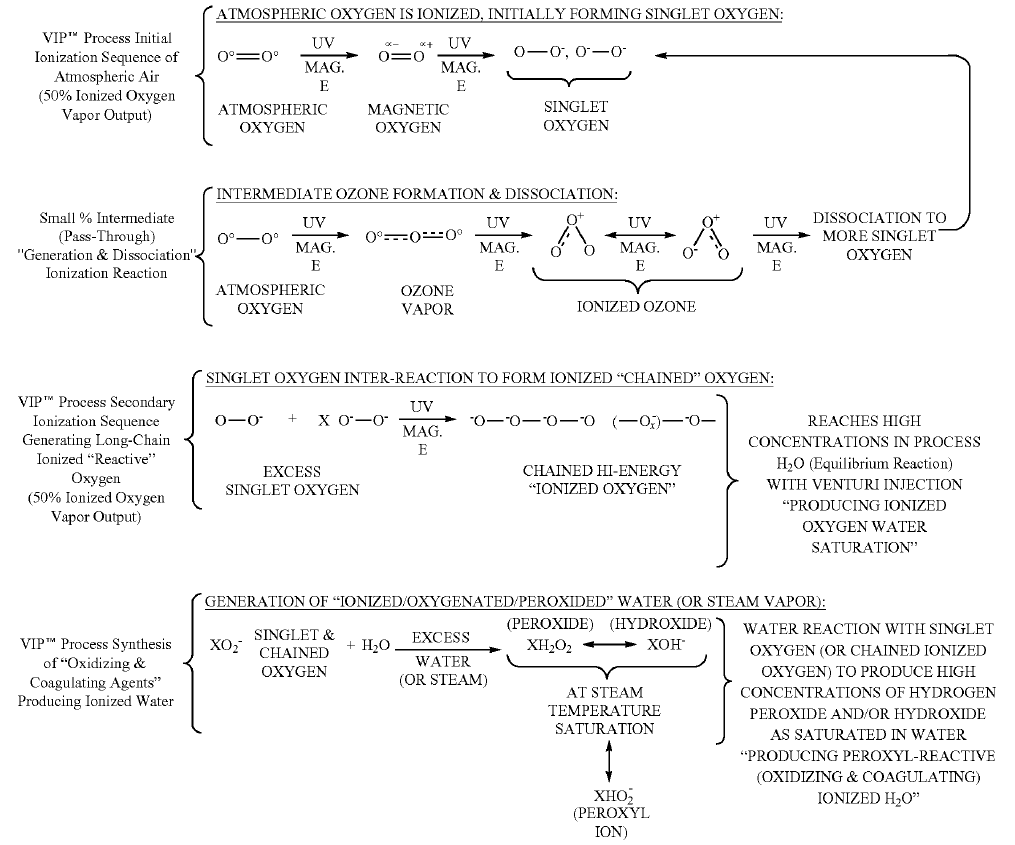„Steam reforming is the dominant gas reforming technology. It has a long history of development and has served as a source of syngas and hydrogen for years. In addition to its refinery use, steam reforming is now the preferred method of producing hydrogen for ammonia synthesis.
The main reaction in steam reforming is syngas production as
CH4+ H2O⇆CO+3H2, ΔH˚(1,000˚C)=+226.1kJ/mol.
Additional hydrogen is generated by the water-gas shift reaction
CO + H2O⇆CO2+H2, ΔH˚(1,000˚C)=−41 kJ/mol.”
(from www.sciencedirect.com)
VIP™ PROCESS
The table below illustrates what may be representative of some of the major chemical reaction sequences whereby various negative electrostatic enhancement species, perhaps for use in generating a negatively electrostatically enhanced water species and perhaps including singlet molecular oxygen ions, may be formed. Of course these are merely illustrative of such chemical reaction sequences and should not be construed to limit the inventive technology thereby.
The table may show a reaction of atmospheric oxygen, under the influence of short wavelength ultraviolet energy („UV”) and a magnetic field (referenced by the symbols „MAG.E”) as it may form a polarized or magnetic oxygen molecule, and thence may dissociate into singlet molecular oxygen ion species (also knows as Superoxyde Ion), which may be highly reactive.
The table also may show the formation of ozone, which in itself may be extremly reactive, and which also may dissociate to form singlet molecular oxygen ions. The table also may show that the singlet moleculat oxygen gyas may further react with water vapor, and may form hydrogen peroxide and perhaps hydroxide radicals. As illustrated by the tablet he ionized oxygen may also react to form various combinations of hydrogen peroxide and/or hydroxide in water.

Note:
Excess Singlet & Chained Singlet oxygen ions remains saturated in H2O, providing a residual of oxidizing & coagulative reaction agents.
VIP™ = Vapor Ion Plasma